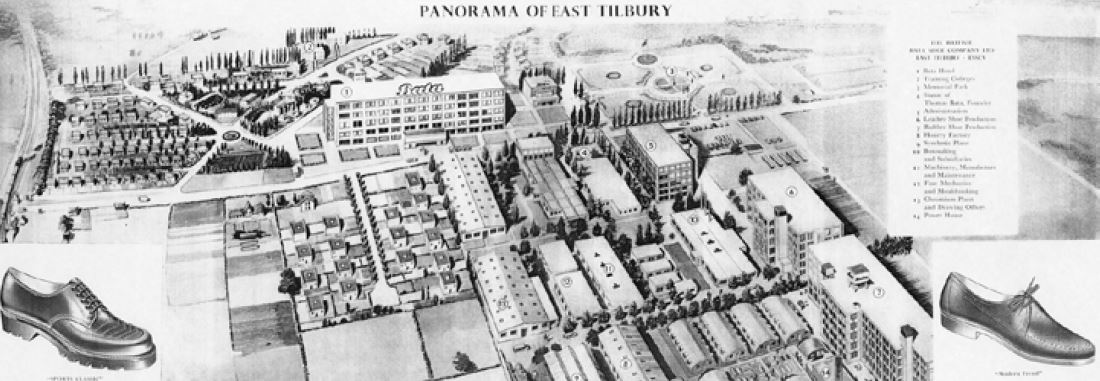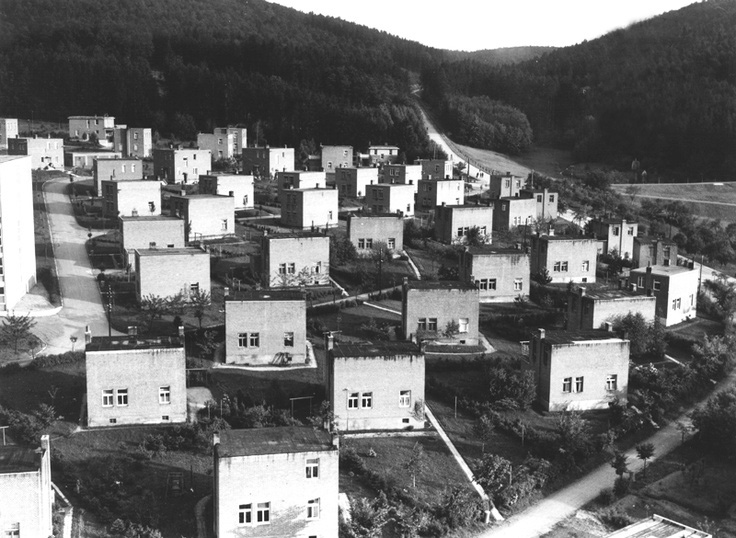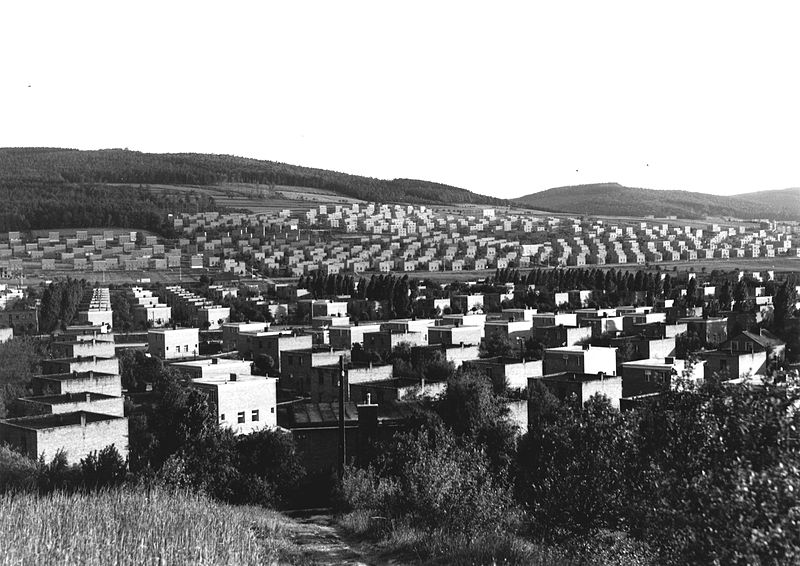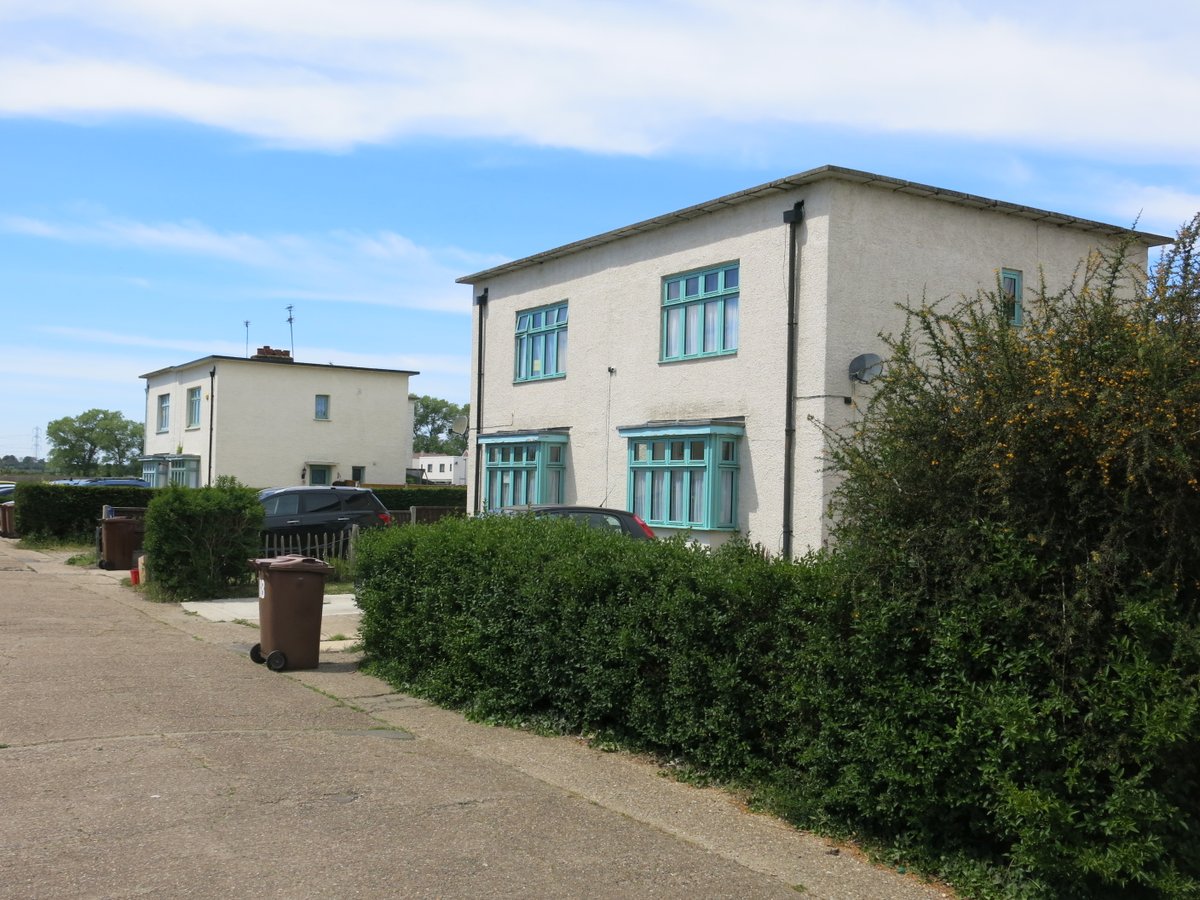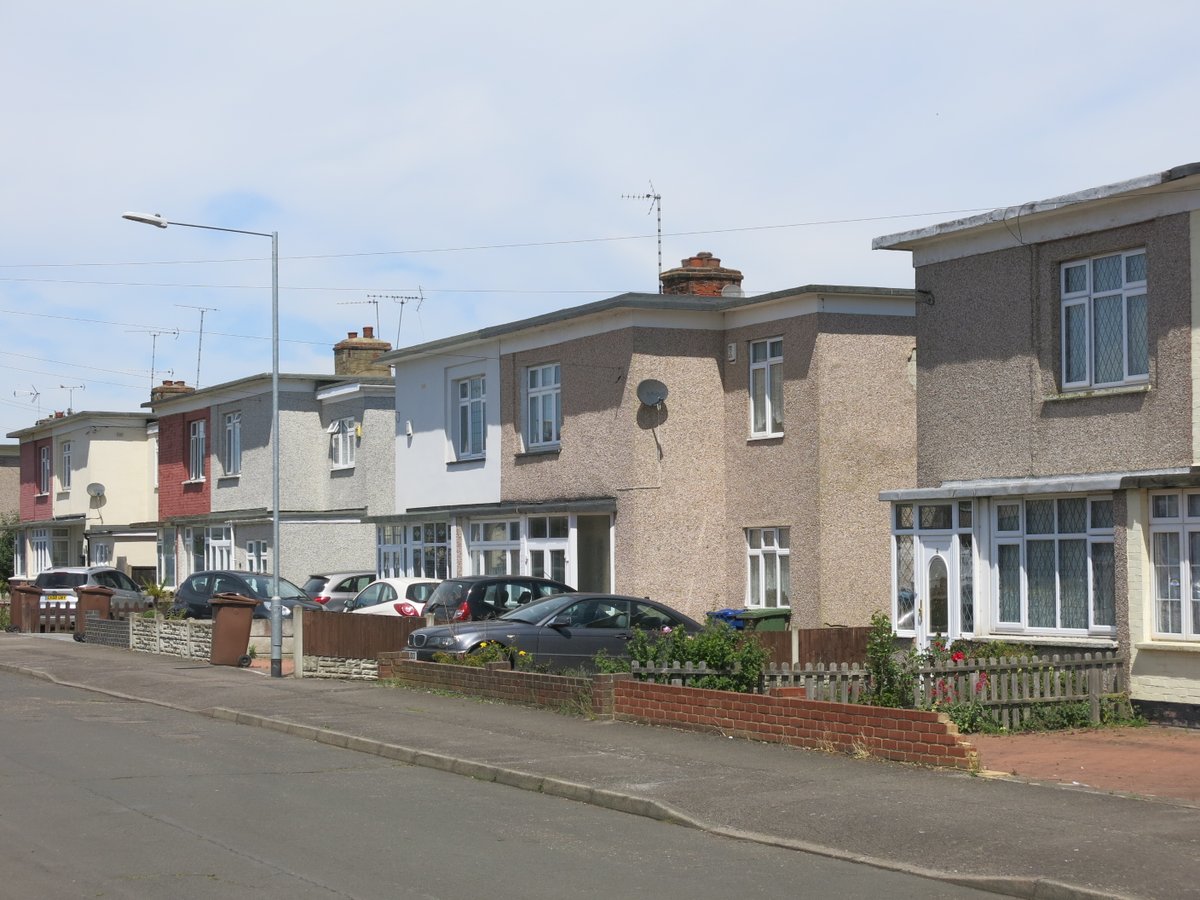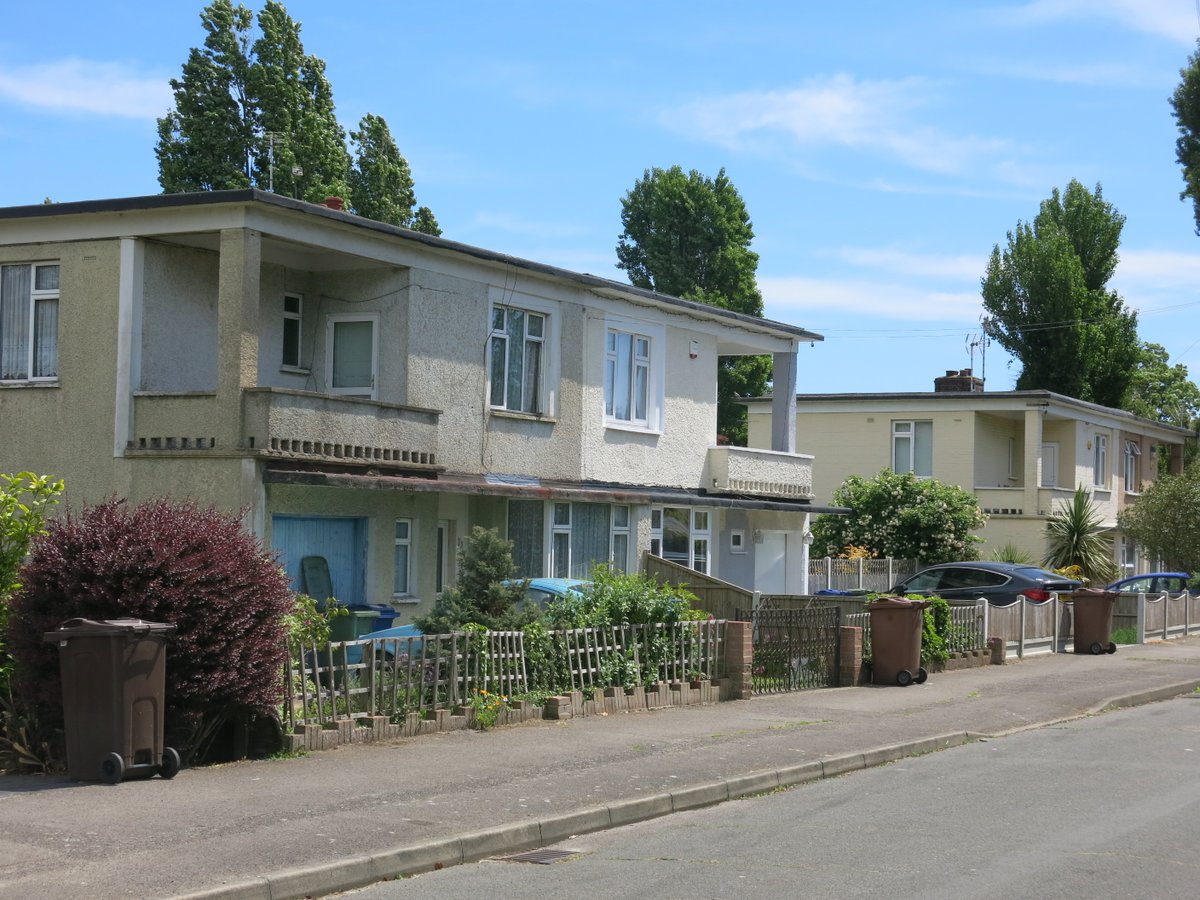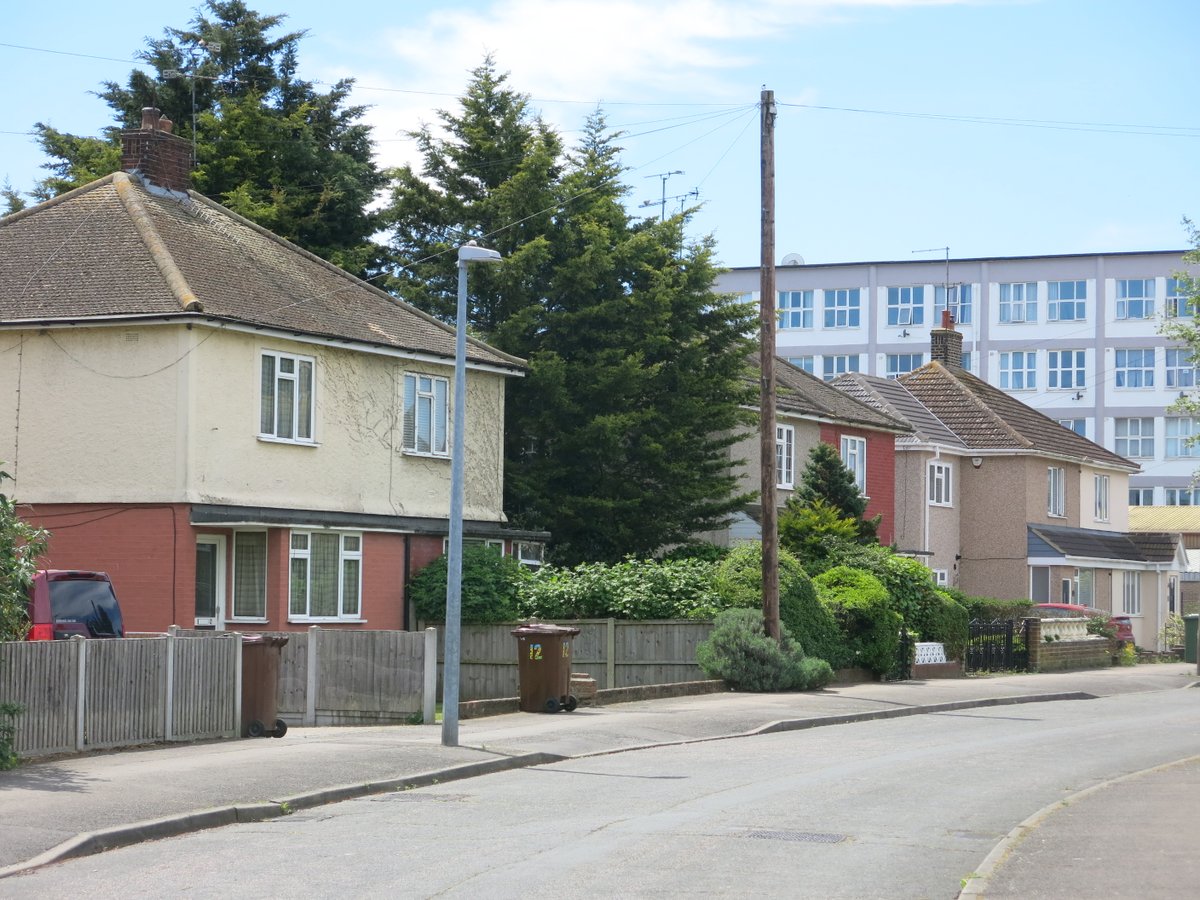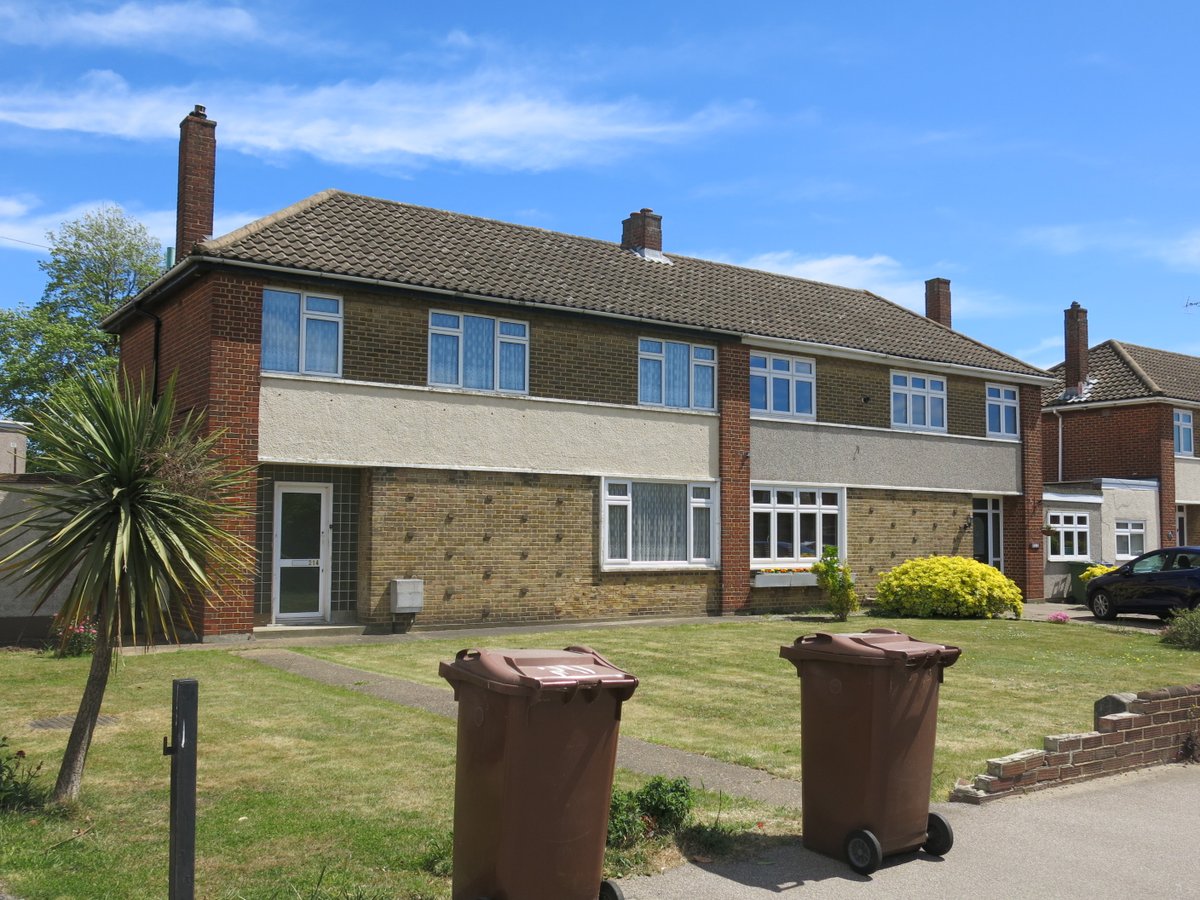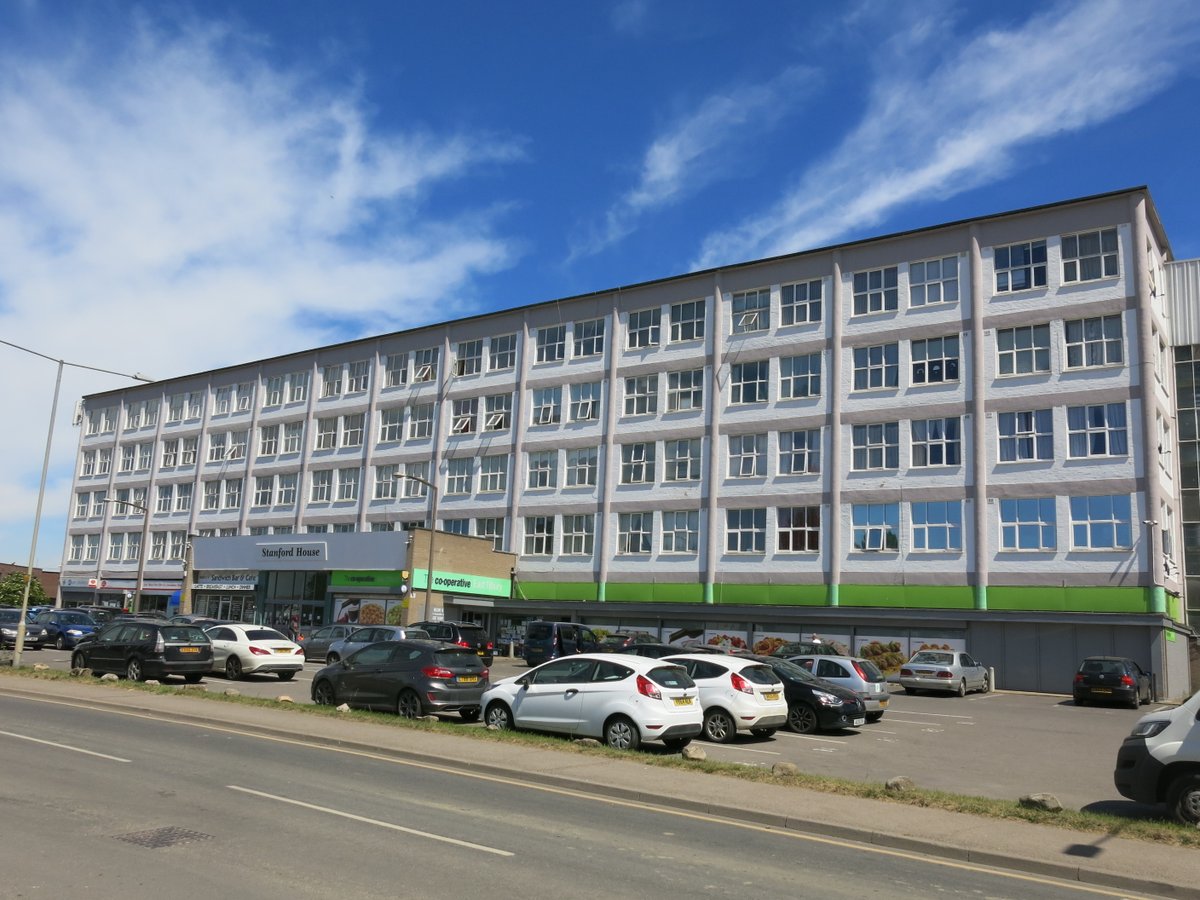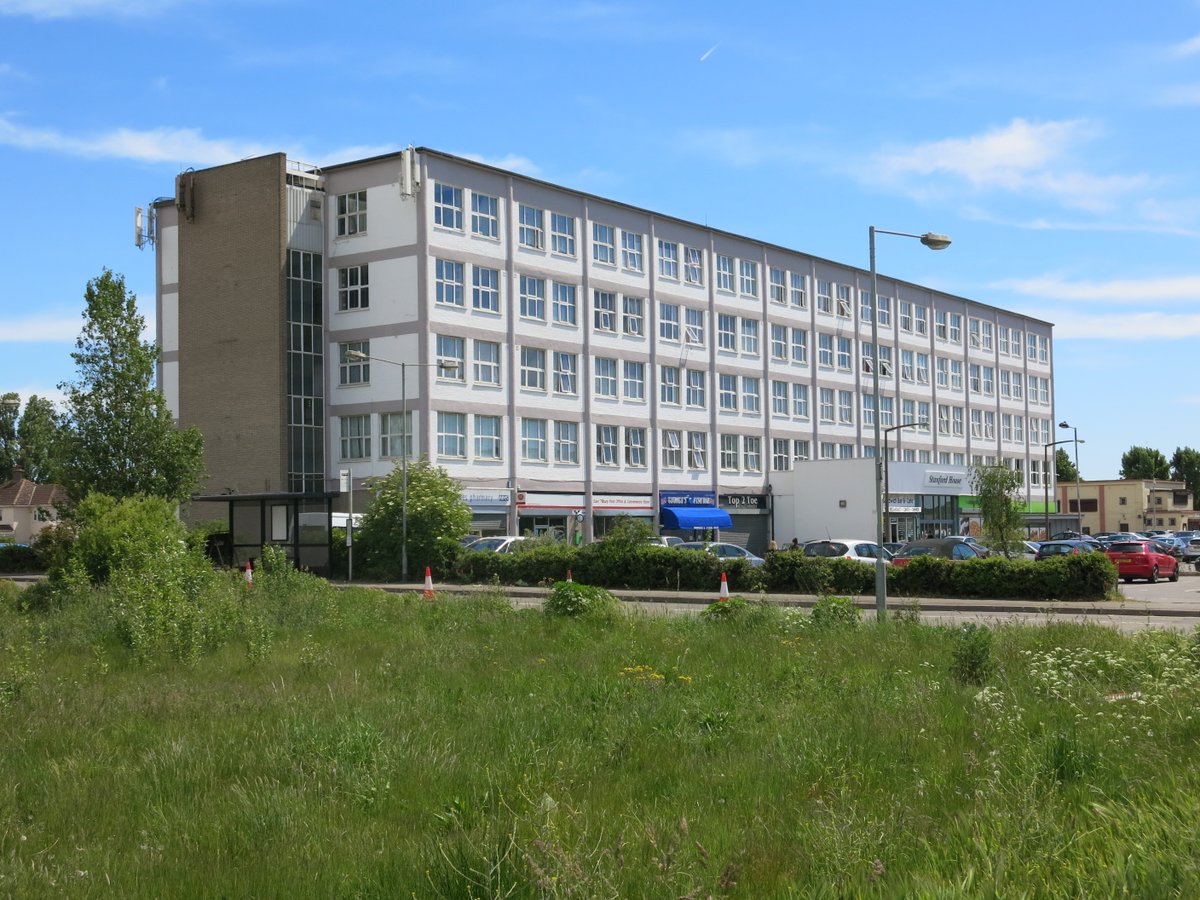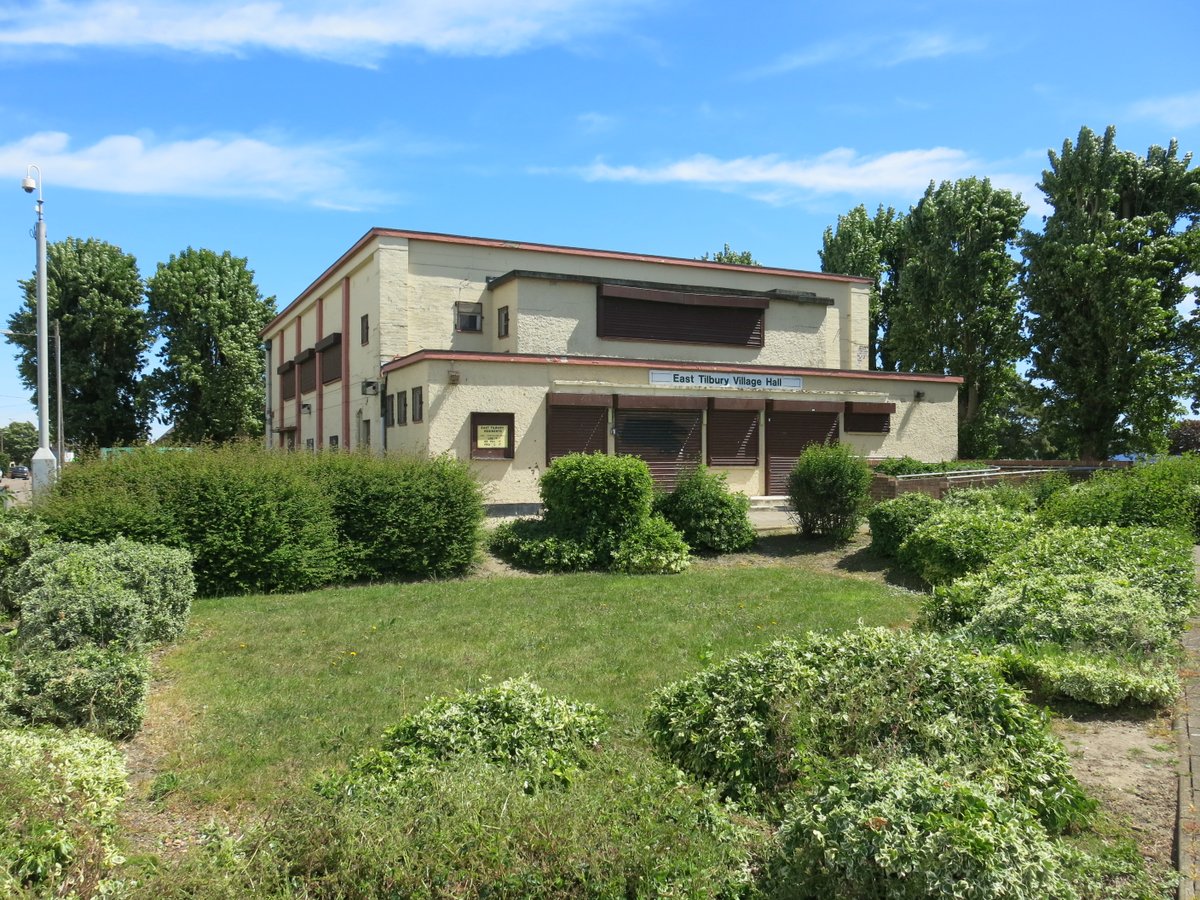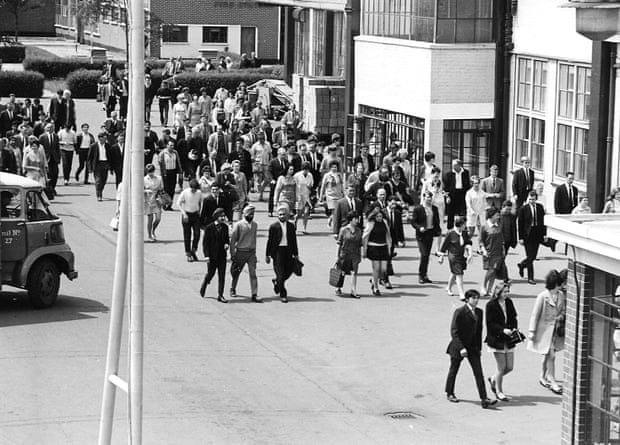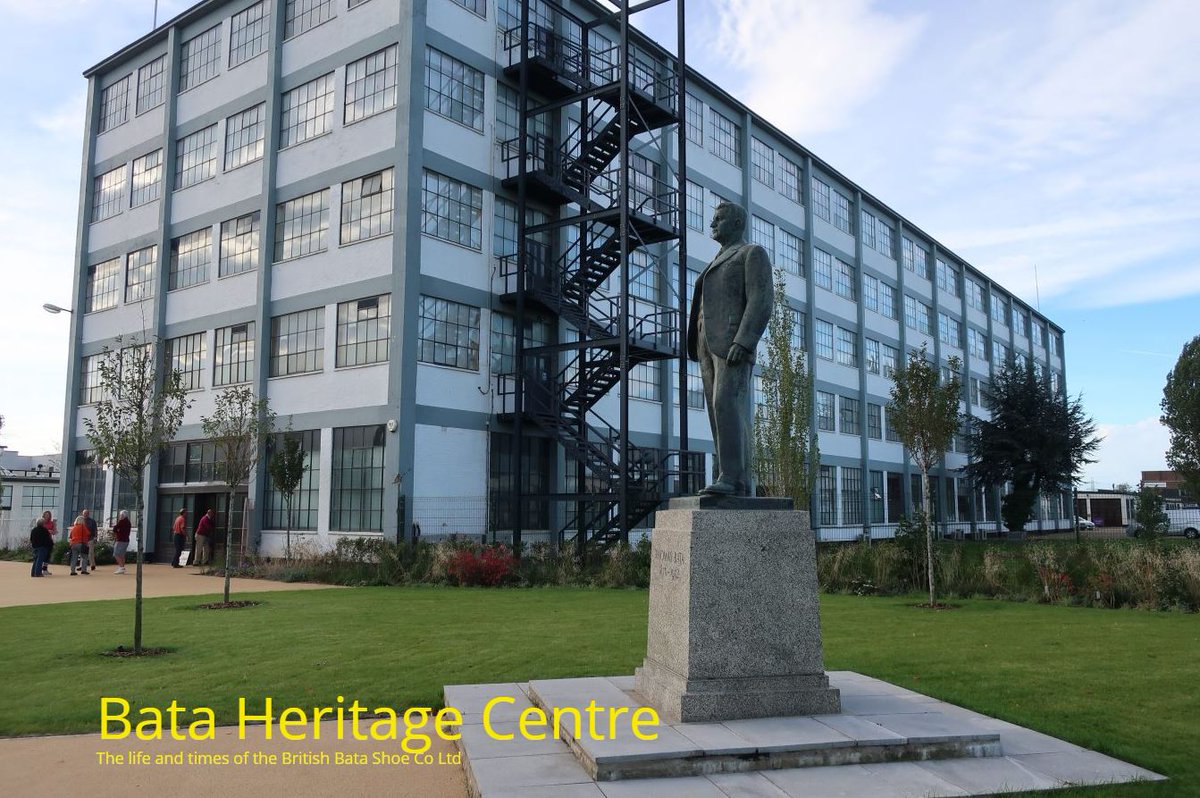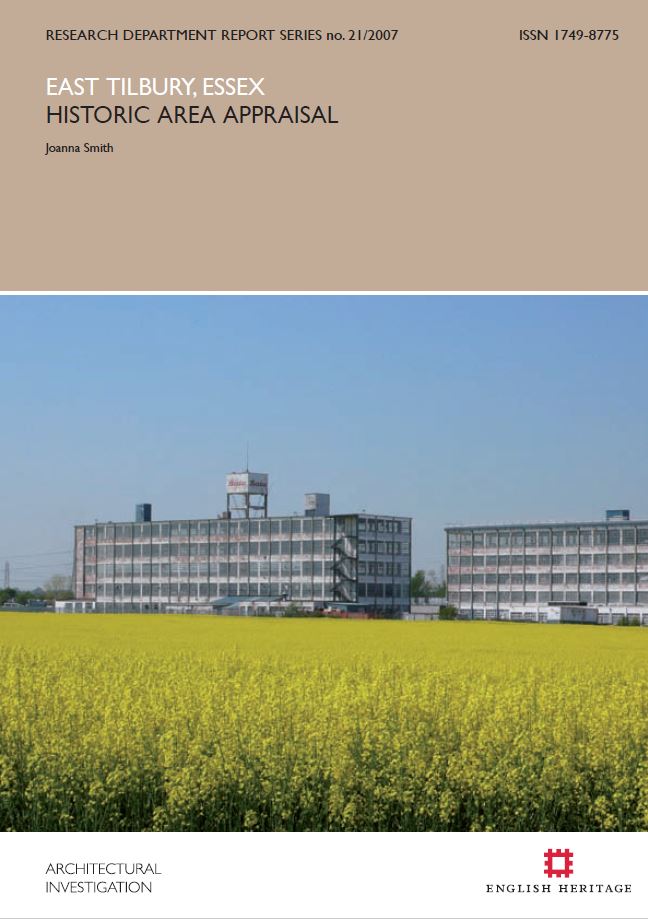1/ East Tilbury is remarkable - a Czech modernist factory town built in rural Essex. Begun in 1933, it was built by the Bata Shoe Company led by Tomáš Baťa, photographed here in 1932, the year of his death in a plane crash, and in a Joseph Hermon Cawthra statue in East Tilbury.
2/ Baťa foresaw a ‘gigantic new industrial centre...to contain...forty different factories and the houses of the workpeople, together with a railway station, riverside jetty, shops, aerodrome, swimming baths, theatre, dance halls and cinemas’. Here it is, a bit smaller, in 1958:
3/ The concept was based on the company& #39;s hometown, Zlin in then Czechoslovakia, developed from the 1920s when Baťa was the town& #39;s mayor.
6/ But housing was crucial to the vision. The first homes went up in Bata Avenue in 1933-34 to Czech designs and with Czech fittings. In total, 362 homes were built by Bata, the last in 1966.
7/ More workers& #39; housing can be be seen here in King George VI Avenue and Thomas Bata Avenue, two-three bedroom parlour houses designed in the flat-roofed style favoured from the late 1930s to 1947.
8/ Managers received superior accommodation with built-in garages and covered terraces as you can see here on Coronation Avenue and Queen Elizabeth Avenue, constructed in the late 1930s.
9/ Other and later housing, such as this on Princess Avenue, followed a more traditional British form.
10/ But architectural ideals were maintained in the housing on Princess Margaret Road dating to the later 1950s, probably designed by the architect R S Fraser.
11/ Baťa& #39;s vision encompassed a community with all necessary amenities. The Community House was built in 1935 as the first factories went up. It included shops, ballroom, restaurant and works canteen, dormitory accommodation for workers and a gymnasium.
13/ One resident who moved in in 1940 recalled & #39;it was a wonderful place to live. At the time, it was very modern. Having a bathroom inside the house was a novelty...But if you lost your job, you lost your house.& #39; (Photo: clocking off time,1960s; credit Bata Trust/Radical Essex)
14/ The much diminished factory finally closed in 2005. There are now attempts to build on this extraordinary heritage and develop the town as part of the Thames Gateway project. There is some good modern housing in Bata style on Shearwater Avenue.
15/ For more information, visit the website of the Bata Heritage Centre ( @BataHC15):
https://www.bataheritagecentre.org.uk/ ">https://www.bataheritagecentre.org.uk/">...
https://www.bataheritagecentre.org.uk/ ">https://www.bataheritagecentre.org.uk/">...
16/ And you can read this excellent detailed account of the town& #39;s development and design from @HistoricEngland:
https://research.historicengland.org.uk/PrintReport.aspx?i=14531">https://research.historicengland.org.uk/PrintRepo...
https://research.historicengland.org.uk/PrintReport.aspx?i=14531">https://research.historicengland.org.uk/PrintRepo...

 Read on Twitter
Read on Twitter

